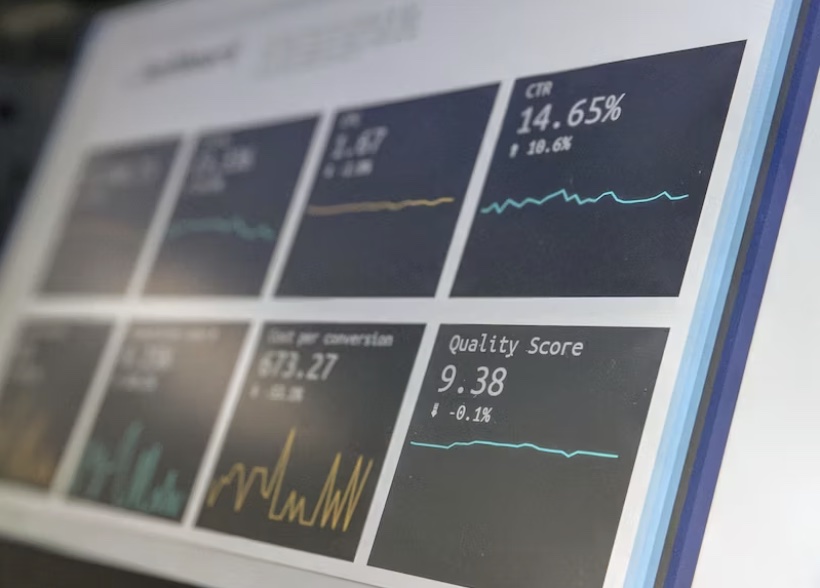The Silent Struggle of Campus Navigation & How Universities Can Solve the ‘Lost Freshman’ Problem
You’re Not Late You’re Just Lost It’s the first week of the semester. Thousands of students swarm the quad, new ID...

The marketing landscape has dramatically evolved in recent years. With this seismic shift, it’s become increasingly important to look beyond traditional marketing channels and explore new avenues of reaching your target audience. In this guide, we’ll delve into how to set up a DMO marketing plan, travel marketing budget, providing insightful information and examples to aid in the process of developing destination marketing strategies.

Creating a destination marketing strategy is crucial for attracting more visitors and boosting the tourism industry in your area. This guide will walk you through the essential steps, offering examples and key considerations to remember along the way.
Setting clear objectives is the first step in any effective destination marketing strategy. These goals will guide your efforts and help measure success. For example, you might aim to increase the number of international tourists by 20% over the next year.

Conducting a SWOT analysis helps identify your destination’s strengths, weaknesses, opportunities, and threats. Understanding these elements is vital for crafting a robust destination marketing strategy. A coastal city may list its beautiful beaches as a strength and seasonal tourist dips as a weakness.
Knowing your target audience allows you to create tailored marketing messages that resonate with potential visitors. This step involves segmenting your audience based on various factors such as demographics, travel behavior, and preferences. A historic town might target history enthusiasts and educational groups.

Your destination’s unique selling points (USPs) are what set it apart from other locations. These could include natural beauty, cultural heritage, or unique events. For instance, a town known for its annual music festival should emphasize this in its marketing material.
A well-thought-out content strategy is essential for engaging your audience and enticing visitors to your destination. This includes creating valuable content such as blog posts, videos, and social media updates. For example, a travel blog featuring local attractions and itineraries can attract more tourists.
Utilizing digital marketing channels effectively can expand your reach and attract more visitors. This involves using social media, email marketing, and DOOH advertising. For example, targeted Facebook ads can attract specific groups interested in visiting your destination.
Digital Out-of-Home Advertising Examples and Ideas |
 |
Collaboration with local businesses and stakeholders can amplify your marketing efforts. These partnerships can help create comprehensive packages that offer greater value to visitors. For instance, partnering with local hotels and tour operators can provide attractive deals for tourists.
Regular measurement and evaluation of your marketing efforts ensure that you are on track to achieving your objectives. This involves using key performance indicators (KPIs) to assess the effectiveness of your strategies. For example, tracking website traffic and conversion rates can indicate how well your campaigns are performing.

Continuing to optimize and improve on these steps and paying attention to key considerations, you can develop a comprehensive destination marketing strategy that attracts more tourists and promotes sustainable growth in the tourism industry.
Imagine you’re given a $100,000 marketing budget to promote a scenic coastal town as a travel destination. How might you allocate this budget across different marketing strategies? To approach this thought experiment, we first analyze the target demographics, peak travel seasons, and the unique selling propositions of the town.
| Marketing Strategy | Budget Allocation | Description |
|---|---|---|
| Digital Marketing | $30,000 | Utilizing SEO, social media, and influencer partnerships to target tech-savvy travelers. |
| Traditional Marketing | $25,000 | Includes local print and radio ads, targeting demographics that still engage with these mediums. |
| Event Marketing | $20,000 | Sponsoring local festivals or trade shows to attract high volume traffic. |
| Partnership Marketing | $15,000 | Creating travel packages with hotels and airlines, potentially involving revenue share agreements. |
| Market Research & Contingency | $10,000 | Reserved for unexpected opportunities and measuring campaign effectiveness to allow agile responses. |
This theoretical budget allocation underscores the need for a multifaceted approach, balancing various marketing techniques with the flexibility to adapt and optimize based on real-time feedback and analytics.

In drafting your marketing budget, aim for clarity, specificity, and flexibility. Language should be concise and jargon-free to ensure accessibility for all stakeholders. Through the use of real-world examples and practical scenarios, we will illustrate a variety of approaches to allocating funds effectively. Each example will encapsulate realistic marketing challenges and solutions that underscore the importance of adaptability and strategic foresight in budgeting.
In this first example, we will explore a DMO’s marketing budget that allocates most of its funds toward traditional marketing methods. This could include print advertising, TV and radio commercials, and billboards. While these methods have been effective in the past, they may not be as impactful in today’s digital age where consumers are bombarded with advertising messages. The budget should also include a portion for market research and analysis to measure the effectiveness of these traditional methods.
On the opposite end of the spectrum, we have a DMO that focuses solely on digital marketing efforts. This could include social media campaigns, influencer partnerships, and search engine optimization (SEO). With a growing number of consumers turning to online platforms for travel inspiration and information, digital marketing has become a crucial component in any DMO’s budget. The budget should also factor in the costs of creating high-quality content and maintaining an engaging online presence. 
An integrated marketing approach combines elements of both traditional and digital methods. This allows for a broader reach and a more diverse target audience. For example, a DMO may use traditional methods to reach an older demographic while also investing in digital marketing to appeal to the younger generation. This approach requires careful planning and coordination between different marketing teams, but can ultimately lead to a more comprehensive and effective campaign.
Another way to allocate marketing funds is by hosting events. This could include festivals, trade shows, or community events that showcase the destination and attract potential visitors. Event marketing can be a valuable tool in creating buzz and generating interest in a destination, but it also requires a significant investment of time and resources. The budget should factor in event planning costs, as well as any additional promotional efforts.
Partnering with other businesses and organizations can be a cost-effective way to reach a wider audience. For example, a DMO may collaborate with airlines or hotels to offer travel packages or work with local attractions to promote each other’s offerings. Partnership marketing can also involve joint advertising campaigns and cross-promotion on social media platforms. The budget should include any fees associated with these partnerships, as well as the costs of creating and executing joint marketing efforts. 
A DMO (Destination Marketing Organization) marketing budget is a financial plan that outlines all the costs associated with promoting and selling a tourist destination. This marketing budget outlines what is expected to be spent. It’s a crucial component of any comprehensive marketing plan, detailing the allocation of funds for various marketing activities. These activities can range from traditional advertising to digital marketing efforts, including social media ads. The marketing budget templates can be used to structure and manage these expenses effectively. It’s important to note that a well-planned marketing budget should account for global advertising spending trends, especially in the ever-evolving realm of digital marketing. A detailed marketing budget breakdown is also essential to understand where funds are being allocated, whether it’s for tourism marketing campaigns, content creation, or other promotional endeavors.
Allocating funds across various marketing channels is a dynamic process that must align with the strategic goals of a destination marketing organization (DMO). A persuasive argument for fund allocation should be grounded in data and consumer behavior insights. Those who control the purse strings need to understand that the most effective mix of channels will depend on the target audience demographics and the customer journey. For instance, younger travelers may gravitate towards inspiration found on social media and online advertisements, while older demographics might be more influenced by traditional media such as print. Research specifics, such as the rise in mobile bookings among millennials or the preference for hands-on travel experiences among baby boomers, can make a compelling case for a balanced marketing approach. One must argue that expenditures should not merely chase trends but rather invest in a diversified portfolio of marketing channels that ensures resilience and adaptability. This might mean allocating a greater share of the budget towards digital marketing due to its measurable ROI and the ability to adjust campaigns in real-time, but it should also advocate for maintaining a presence in traditional media to cover all bases and enhance brand recall. Furthermore, when advocating for fund allocation, highlight the importance of reinvestment based on performance analytics. Channels that demonstrate high engagement rates and conversion metrics should be prioritized in funding. By implementing a feedback loop where budget decisions are constantly reviewed against key performance indicators, a DMO ensures that its marketing spend is efficient and impactful. Lastly, persuade the stakeholders that investing in marketing technology and tools to better understand data analytics, customer segmentation, and campaign management is essential for informed decision-making. Emphasize that this holistic approach allows for optimal allocation of funds, fosters innovation, and ensures the longevity of the DMO’s marketing efforts. 
Traditional advertising methods like direct mail and paid advertising are no longer the only means of reaching your prospective travelers. Digital marketing channels such as social media advertising and search engines offer new opportunities to engage with your audience.
When setting up a marketing budget for a Destination Marketing Organization (DMO), it’s crucial to prioritize the channels that offer the best return on investment. Below is a ranked list of some of the most effective marketing channels for a DMO:
Each channel has its strengths and can be more or less effective depending on your specific goals and target audience. Your marketing budget should reflect a balance between proven tactics and innovative strategies to reach potential visitors. 
While immediate results are often desirable, it is also crucial to budget for mid and long-term marketing strategies. This could include investing in kiosks or other physical marketing efforts that can create an impact from day one.
Content marketing is a powerful tool to highlight the core culture of your destination. It is worth dedicating funds to creating compelling content that resonates with your audience.
Co-branding campaigns can be an effective way to stretch your marketing budget and increase your reach. Partnering with local businesses can also enhance the overall visitor experience.
In addition to the above, other considerations should factor into your marketing budget. This includes market research, public relations (PR) costs, website development or redesign, and email marketing.

Setting up a DMO and travel marketing budget requires careful consideration of various factors. From traditional advertising to digital marketing, from immediate tactics to long-term strategies, each aspect should align with your business goals and marketing objectives. By using a marketing budget template, you can gain a clear view of your entire financial picture, enabling you to allocate funds effectively and achieve sustainable growth. Remember, each dollar spent should ultimately address your marketing goals and contribute positively to your projected revenue.
You’re Not Late You’re Just Lost It’s the first week of the semester. Thousands of students swarm the quad, new ID...
Airbnb Didn’t Just Disrupt It Redefined Hospitality The traditional hotel playbook was written around consistency,...
The Battle for Eyeballs In 2025, attention is currency. Consumers walk through environments saturated with glowing...